Trans-Canada adventure: From the mountains to the plains
When people think of a motorcycle road trip, they often picture long roads with mountains glowing orange in the late afternoon sun, a rider leaned over on their bike barrelling through a tight curve or the celebratory beers shared as riders in t-shirts and riding pants laugh about the day’s causal adventure.
The start to our cross-Canada trip did not begin like that. Instead, a thick fog shrouded the highway out of Vancouver and my body shivered from the cold. Then, with the temperature in the single digits, after about ten minutes of riding I started to see the first drops of rain hit my visor. The universe had decided to tell us this was the time to turn back. I smiled to myself and said to Janel, “After several months of planning, it was going to take more than some bad weather to turn us around.” The universe heard and accepted my challenge.
Our first day’s route took us on one of the most beautiful highways British Columbia has to offer: the infamous Coquihalla, also called “the Highway through Hell.” The highway begins at sea level and reaches an elevation of 1,244 metres (4,081 ft) over a distance of 203 kms; however, the run up to the summit is a rapid ascent over a very short distance. Made famous by the Discovery Channel that coined the nickname, the highway is known for accidents, avalanches, washouts and the steep roads running up and down the mountains. The night before we started our trip up the highway, I was checking the weather as Janel packed our panniers. The weather forecast for the Coquihalla was calling for heavy rain. Having Gore-Tex gear and Sidi Adventure boots we had little concern for a bit of wet riding.
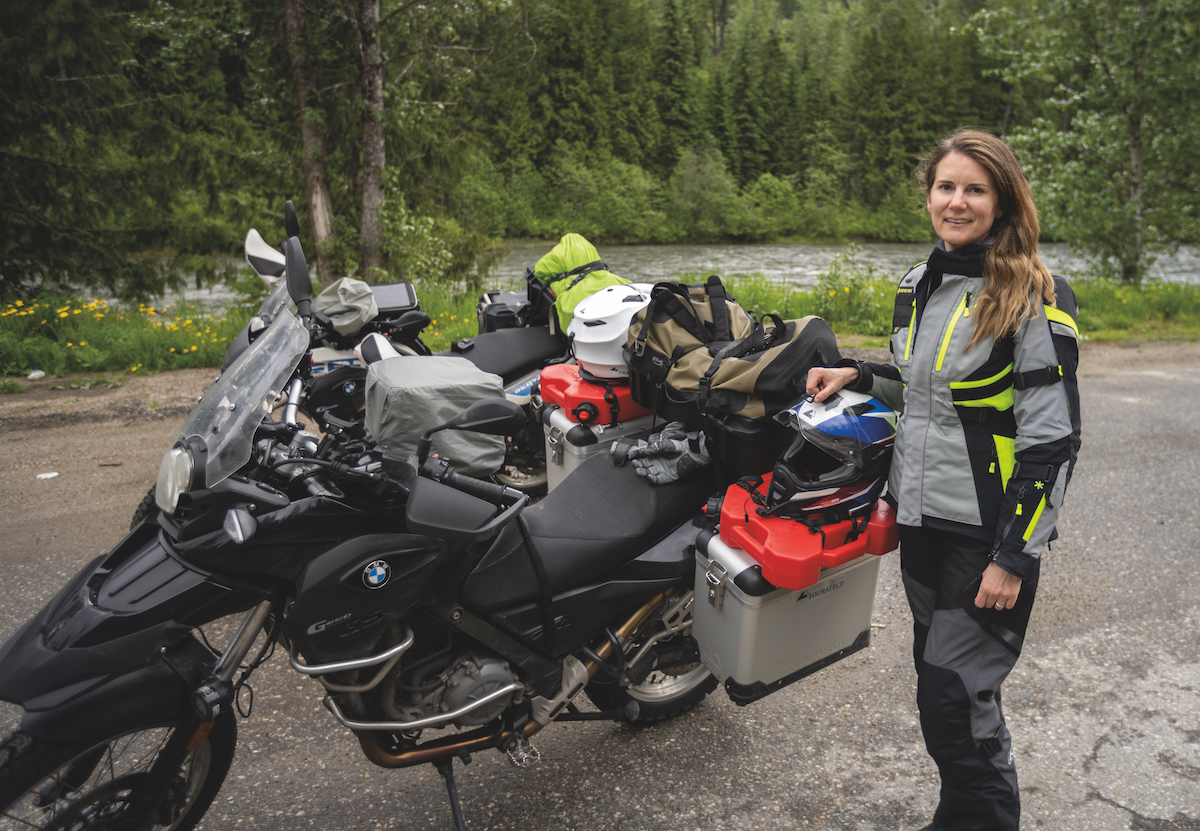
Getting out of Vancouver in thick fog and heavy traffic was our first challenge, but like many motorcyclists, we worked our way into the HOV lane and just rode out the traffic at a steady pace. The further we made it out of the Vancouver and onto the Coquihalla, the thicker the fog became, but also, the more excited I got to be taking this adventure. I paid little heed to the fog and instead couldn’t stop thinking about the adventures we would have once we left our home province of British Columbia. What beautiful places would we find? What types of people would we meet? How would the trip up Route 389 from Quebec into Labrador go?
While my mind was meandering through these thoughts, I heard Janel say, “Dustin, it’s really raining…” She was right, the rain had really picked up and by the looks of the deep puddles in the road, it had been raining steady since the night before. Just then, a truck flew passed, splashing up litres of water that covered our visors, motorcycles and us. After a quick hand wipe of the visor we knew, this was going to be a ride through a lot more than “a bit” of rain.
We spent the majority of our trip cautiously in the slow lane taking on the ascent to the summit. Not only was the rain making visibility difficult, the road was extremely slippery. Most cars and large trucks realized how slippery the roads were and a normal 120km/hr speed limit was down to around 80km/hr. As our elevation increased, we began to see several feet of snow on the mountain tops. Before long, my nose started to run, my feet were cold and my legs started to shiver. I knew if I was cold, Janel was freezing. But what could we do? Stop and get colder and wetter? Our only choice was to push on and hope on our descent there might be a bit of sunshine waiting for us.
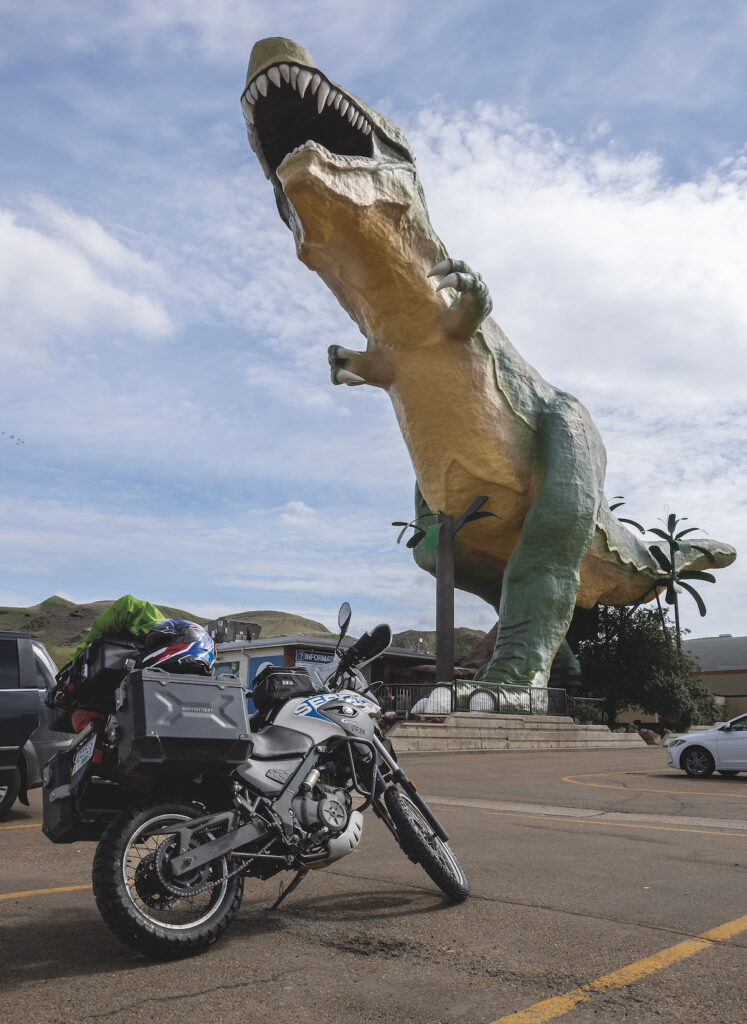 The sun never came, but once arriving at our accommodations we stiffly started to take off our clothes. There was so much water on the road, the water came up under our Gore-Tex jackets and soaked us from the inside out. Janel was drenched from her chest to her waist, and my stomach looked like I had a bathroom accident while standing on my head. Our feet however, remained nice and dry which was a plus, as we all know that drying out boots can take some time and effort. Overall, the day wasn’t that bad: it was wet and the visibility wasn’t great, but most drivers were cautious and left us lots of space along the highway. Once again encouraging the inevitable, I asked the universe: “That’s all you got?”
The sun never came, but once arriving at our accommodations we stiffly started to take off our clothes. There was so much water on the road, the water came up under our Gore-Tex jackets and soaked us from the inside out. Janel was drenched from her chest to her waist, and my stomach looked like I had a bathroom accident while standing on my head. Our feet however, remained nice and dry which was a plus, as we all know that drying out boots can take some time and effort. Overall, the day wasn’t that bad: it was wet and the visibility wasn’t great, but most drivers were cautious and left us lots of space along the highway. Once again encouraging the inevitable, I asked the universe: “That’s all you got?”
The next day we were to leave British Columbia with our route taking us into the Rockies along roads that looked like they were attached to the sides of mountains, through snow sheds and out onto the plains of Alberta. The rain pelted us as we loaded up the panniers in the early morning; however, it didn’t dampen our enthusiasm for our next leg. The rain couldn’t be worse than the previous day, and there was a waterfall that was known to be down a short dirt road we were excited to check out.
It was a dark dreary day, the rain wasn’t heavy, but it was constant, creating a chill in the high mountain air. A low ceiling made the mountains around us look ominous, and the slick roads were tugging at our rear tires. The directions to the waterfall were a little vague, so we were out on our own. We came to the assumed turn off and I noticed the burgundy hue coming off a cattle guard ahead. “Have you ridden across a cattleguard yet?” I asked Janel. “No,” was her fearful, questioning response.
This is one of those time I gave my lovely wife bad advice. For those inexperienced with cattle guards, cattle guards are usually made of steel beams running perpendicular to the road, crossing a narrow hole in the ground with gaps in between the beams. Most hoofed wildlife will not cross the guards as they can slip into the gaps. Because the beams are perpendicular, they can be off putting to vehicles so there are flat narrow metals slats that run straight across to limit the impact. I have always ridden across these slats and thus said to Janel “Cross on the beams that run straight.”
As Janel approached the cattle guard, she was afraid and fear led to her slowing down before reaching the cattle guard. When she went to cross the wet cattle guard slats with little momentum carrying her forward, her front tire started to slide to the right, and then her bike started to lean right, which aimed her straight down a 30-foot embankment into the trees below. Instinct kicked in and she pulled the handle bars to the left which actually lined her back up on the road and out of the embankment. If she had stopped there, she likely could have kept going, but like most of us, once we start on the instinct over correction path, we stay on it. Janel then once again pulled to the right, but now she was only headed down a small gravel ditch, at which point she tipped over onto the right side of the bike colliding with the rocks. All of this took place in under six seconds, with me watching from my side mirror, yelling at her to stop (which I am sure helped).
While running the 100 metres or so back to her, I could see her standing by the bike that was three-quarters of the way to upside down. My first thought was “SIT DOWN!” but Janel being Janel said, “Hit the kill switch, I’m not hurt.” I helped her out of the ditch and finally got her to sit. I walked carefully to the bike, turning it off and assessing the damage. The front tire was at a strange angle, so I picked it up and saw she had torn off one of the front signal lights. Other than that, things looked OK. My biggest concern was, how were we going to get the bike out of the ditch?
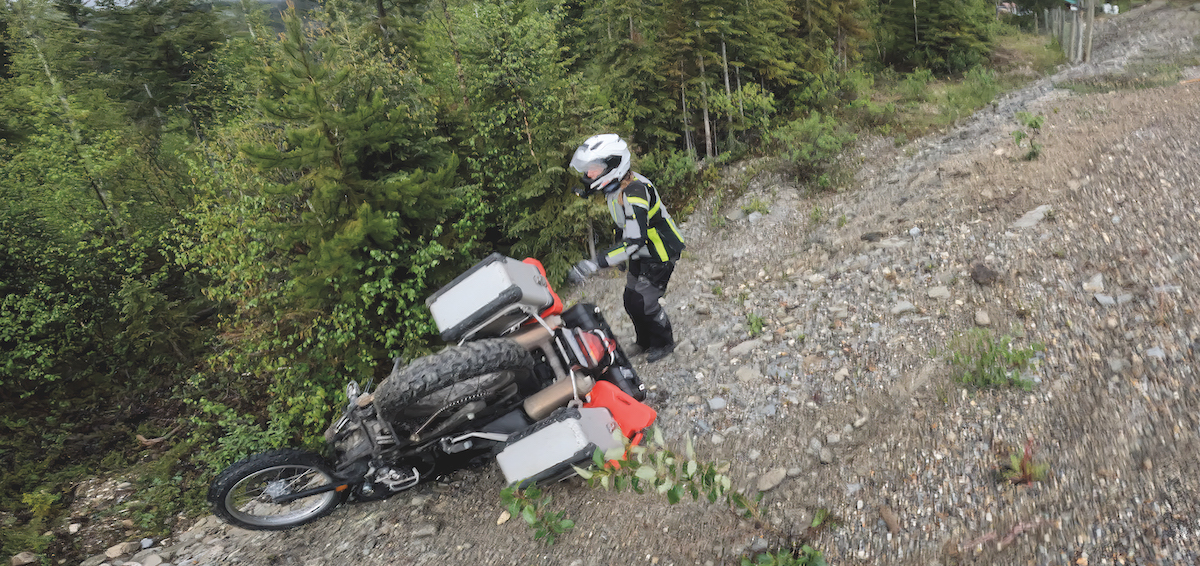
As I tried to sort out our dilemma, I noticed a big yellow school bus with rafts attached on the roof and Glacier Rafting Company written on the side coming down the road. They pulled to a stop, noticing Janel sitting on the side of the road and me in the ditch with the bike. One of their guides dropped down from the bus and proceeded to help us drag it out of the ditch. There was a little push and pull, but once out, the biked looked good, and my initial assessment was correct on the damage. We thanked our helpful hands, and they drove off down the road towards what we thought was the falls. I fired Janel’s bike up and asked what she wanted to do. She said, “Well, we better get going, we still have a long way to go. But I want YOU to ride my bike back over the cattle guard, and I think we skip the waterfall.”
All of this, from the crash to us leaving, took place in under ten minutes. I think this was important for our trip to continue. Janel hadn’t been riding that long at this point and was already concerned about crashing or other issues along the trip. The fact she didn’t have time to focus on the crash or the stress about getting the bike out of the ditch was a big part to her jumping back on and carrying on. Too often I think we focus on what went wrong in an abnormal situation instead of realizing it is an abnormal situation and we should really just move on and worry about it at a later date. I think because it was cold and rainy, Janel really just wanted to get a move on.
We still had a long day ahead of us. After riding through some beautiful rocky landscapes, we started to come out of the Rockies near Banff, Alberta. The long-drawn-out plains of Canada came into view ahead of us. Flat straight roads awaited us as we carried on into the heart of Alberta. The rain came and went with the odd warm sun ray to warm up our backs, but once we were within 50 km of our destination, the rain came back with a vengeance. Visibility started to decrease drastically, and the clouds were dark, making me think it was well past 9 p.m. rather than slightly after 3 p.m. The rain poured down on us as we came into Rosebud, Alberta, a small town famous for dinner theatre and our destination for the night. We pulled into Banks and Braes, our accommodation, and we were welcomed by the kind owners who grabbed us towels and helped us get all our wet gear into the building.
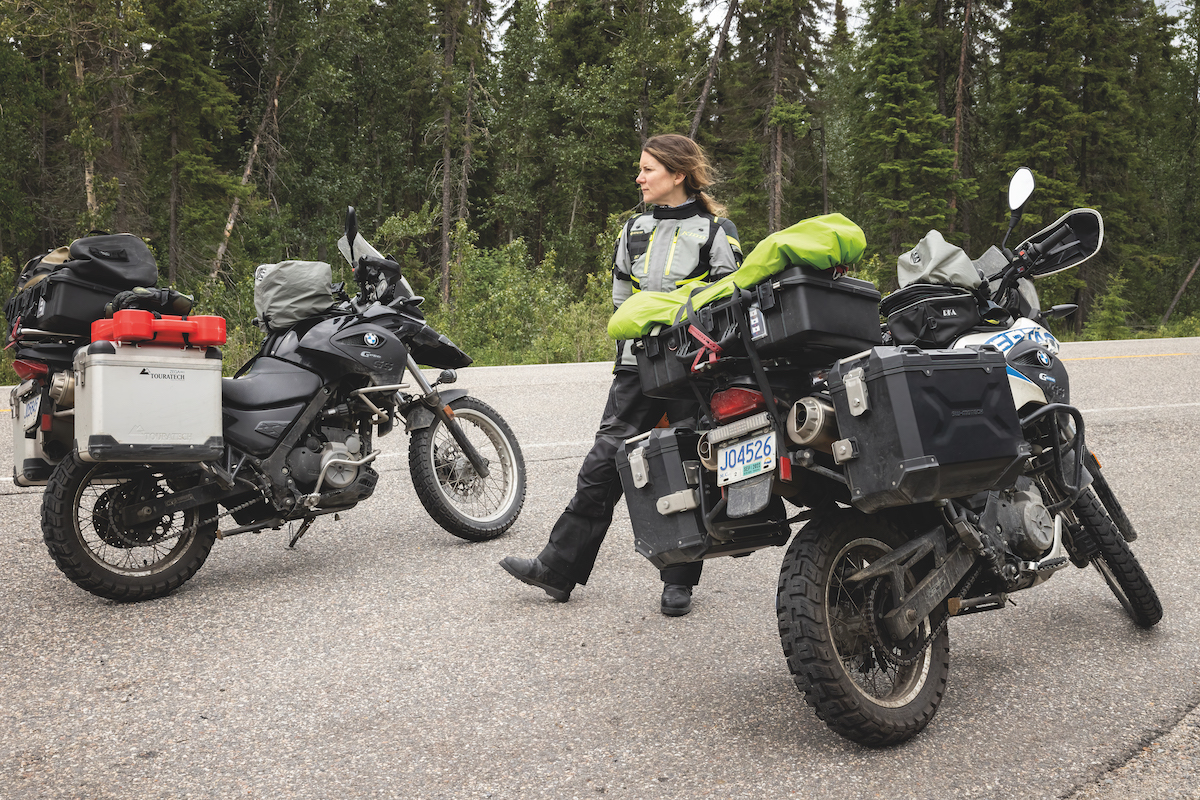
The rain finally stopped as we were lounging in our beautiful Highland themed room called the Lachlan Suite, when Janel mentioned she had made a reservation at the dinner theatre for that evening. A quick hot shower, and we were off for a relaxing evening of acting and singing at the Rosebud Theatre. We took our minds off the events of the day by watching these great actors from around Canada sing their hearts out. When the show came to an end far too soon, we made our way back to Bank and Braes and I noticed Janel was limping slightly. She mentioned her ankle was sore and I suggested we take a look when we were back in the room.
Examining Janel’s ankle, there was a bit of swelling but nothing to be overly concerned with. We put some ice on it and she took some ibuprofen. While she was icing her foot, we both realized that when she crashed her ankle had rolled back between the bike and the rocky ground. Without her tall riding boots her ankle would have broken and that would have been the end of the trip, on day two! Moral of the story: ATGATT beats whatever the universe can throw at you…within reason, of course.
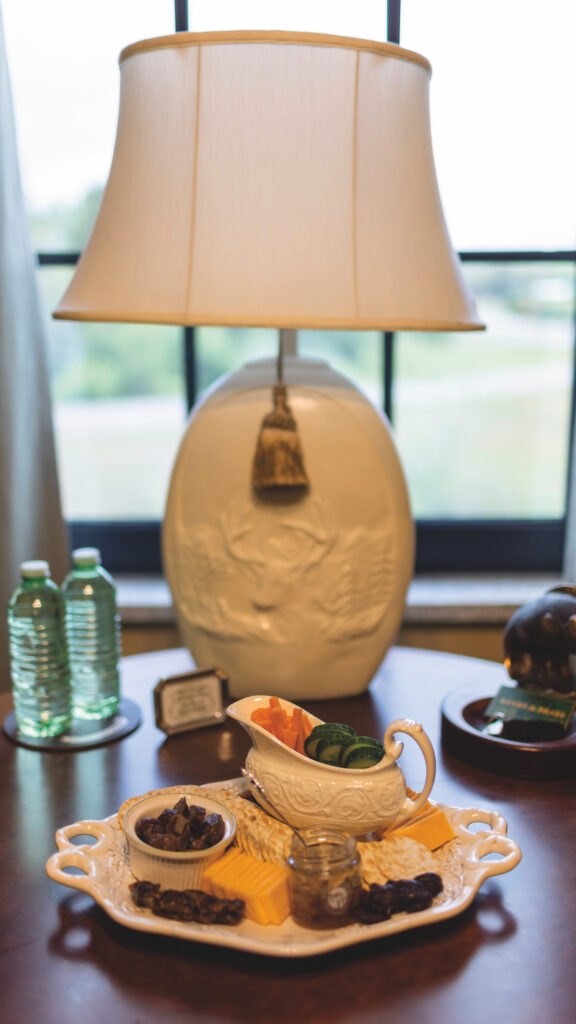
Where to Stay in Rosebud:
Banks and Braes, Rosebud, Alberta
Banks and Braes is a boutique hotel that was built over seven years by the owners and only opened in 2019. The owners have several themed rooms from “London” to “Highlands.” They continue to add new themes for different rooms which should be open soon. The breakfasts are amazing and exactly what you need for your ride across the flat plains. Costs per night range from $160 to 175 USD and include breakfast.
Things to Do in Rosebud and Around:
Rosebud Theatre, Rosebud, Alberta
Rosebud is famous for its dinner theatre, and it is well worth sticking around for. Guests meet at the dining house, a short walk from Banks and Braes, and enjoy a family meal with all guests. From there they cross the street to the playhouse where the magic happens. Plays ranging from The Lion, the Witch, and the Wardrobe to classics such as Fiddler on the Roof keep guests entertained for the evening. The town is small and is based around the dinner theatre, so really, you can’t pass up the opportunity.
Royal Tyrell Museum, Drumheller, Alberta
A great motorcycle ride is from Rosebud to Drumheller through Horseshoe Canyon along Hwy 9. One second the landscape is flat with nothing, and then all of the sudden the landscape turns into a Mars like surface with red hills everywhere. This landscape was great for scientists searching for dinosaur remains, and one of the best dinosaur museums in the world is located in Drumheller. The Royal Tyrell Museum houses some of the largest and most fully preserved dinosaurs ever found. Take the drive to Drumheller, visit with the dinosaurs, and then meander your way back to Rosebud heading southeast along the canyon until you turn back west along highway 10X.

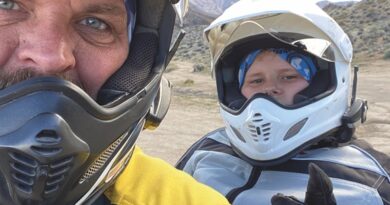
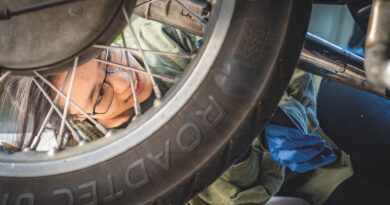
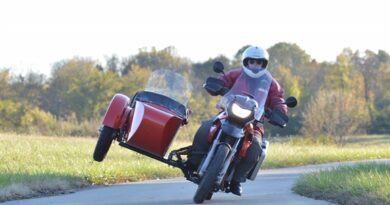
Thanks for sharing, and I am so glad Janel was not seriously hurt! Your story brings back memories of my own Canada crossing from east to west almost 50 years ago and yes, the last day of riding into Vancouver was in pouring rain…